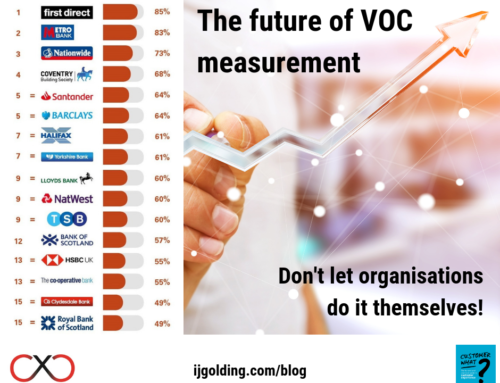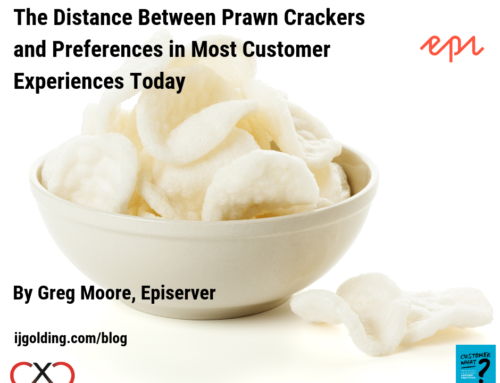I am guessing (and hoping) that this image of a Virgin Media statement is not new to you. If it is, let me just clarify. This is a genuine statement that was sent to Jim Boyden’s father in law. If you have not spotted it yet, Jim Boyden’s father in law is regrettably no longer with us. Despite this, Virgin Media attempted to charge him a £10 late payment fee. As of todays date (8th May), this image has been shared almost 100,000 times on Facebook. This event serves to highlight how critical all forms of customer communication are. This event is a reminder to all organisations that failing to communicate accurately and empathetically can have consequences. It is this unfortunate event that has led me to write this blog post.
The way organisations communicate with customers is a key part of the customer experience. Whether it be electronic communication, or old fashioned printed paper, we all receive stuff in abundance on a daily basis. Very often this communication is ignored by the consumer – especially if it is trying to sell us something. However more important forms of communication – such as statements cannot just be confined to the shredder. Despite this, when was the last time you looked closely at a statement, or analysed the content of an important letter? When was the last time you looked at a utility bill and tried to understand exactly what it was telling you? When was the last time the organisations who send you this stuff actually determined if their communications and all the content within them made any sense?
A couple of weeks ago our latest utility bill caught my attention. I am very fortunate that my wife (who is also my accountant), deals with that side of things in our household. It caught my attention because of a graphic in the bottom right hand corner (see below):
I consider myself to be an educated adult. In fact, I even spent four years at university. Yet trying to understand a ‘direct debit balance curve’ challenged me!! It made me question who at this particular energy company thought that this form of communication would be understood by the majority of their customer base. It is almost certainly communication like this that leads us to have so little positive emotion towards organisations. Why can communication not be taken seriously enough that it is designed in a way that a normal human being can understand?
Interestingly, on the back of this statement (which has a huge amount of information on it) is the Crystal Mark – a sign, supposedly, that the form of communication has been approved by the ‘plain English campaign’. I laughed when I saw this – however, on closer inspection, I read underneath the Crystal Mark that it DOES NOT apply to the front of the bill!!! Why ever not! Does that mean that the front is not as important as the back? Does that mean that the front is gibberish, but the back is perfect English?!
Creating communication that is central to the customer experience and written in language the customer truly understands is not that simple – one should consider it as an art form. Writing customer centric communication requires expert and specialist attention – very much in the same way designing a customer survey does. Last year I was lucky enough to meet one such expert in this field – Mark McArthur Christie of Rubuss (http://rubuss.com/). Mark is a specialist in customer communication and believes that you can transform communication from an overhead into an asset, with better customer engagement, thus smoothing customer interactions.
Mark breaks down communication into six areas, describing their desired state:
- Statements and billing – professional high impact invoices and statements that can reassure, explain and help minimise queries and bad debt
- Complaints and conflict – fewer conflicts with customers, fewer complaints escalated, and most importantly, turning complainants into advocates through better communication
- Email and digital channels – making digital communication to your existing customers sound human, using social media to build customer advocacy
- Legal and form based – easier to understand, simpler forms and T&Cs. Happier, better informed customers through clarity and transparency
- Standard correspondence – enhancing standard operational correspondence to reflect your brand, reduce queries and increase loyalty
- Free form and ad-hoc – consultancy and training for your teams that embeds customer communications culture, gives them the skills they need and the confidence to use them
These six areas almost act as six self assessment criteria – how close to the desired state across these areas is your organisation? Transforming the quality of your customer communication, seeing it as a key element of the customer experience, can have a huge positive impact on your business. Sometimes the adjustments only need to be subtle.
Sticking with the ‘deceased’ customer theme, below is an example of a typical communication sent to a customer – it is pretty direct, with little genuine empathy or emotion:
The second example below shows how this letter can be re-written with a more customer centric tone – subtle changes – but it is sometimes subtle changes that can make all the difference:
Last year uSwitch published an article on the subject of energy bills – basically making the point that they are leaving households baffled and overcharged. 86% of customers were finding them too complicated. 86%!!!!! The article re-iterates the points I am making in the post – you can read it here http://www.uswitch.com/gas-electricity/news/2012/07/23/complicated-energy-bills-leaving-households-baffled-and-overcharged/
Customer communication must be taken seriously. Whether it be a formal statement, or ad-hoc conversations via Twitter. Failing to asses the quality, accuracy and tone of your communications could lead to a PR disaster – such as we saw with Virgin Media. Even if it does not, the cost to your business of not continuously improving communication could be significant. If this is a subject that you could use some help on, you would be well advised to get in touch with Mark!!
Mark McArthur Christie can be contacted on 1993 822 524 or at mark@rubuss.com. You can also follow Rubuss on Twitter at @Rubuss1











Leave A Comment